I am in the process of designing a new ADC\DAC PCB with a digital interface and analog front end. I have tried to separate the different grounds in my circuit to reduce the noise as much as possible but I am not sure if I what I am doing is correct. Please see the diagram below
I have tried to ensure that all the GNDs are returned via a single return - anGND -> GND -> GND RETURN 1\2.
- Should I separate my digital GND (route it to GND Return 1) from my analog ground (route anGND to GND return 2)? NOTE GND Return 1 & 2 are connected directly at source.
- Should I give my +/-12V LDO a different ground?
- Should I give my +5Vadda LDO a separate ground?
- Should I incorporate an additonal "digital" GND for the +5.3V DC\DC ?
In previous designs we have used the same DC\DC +3.3V->+1.1V and have not seperated the digital and anlog grounds and it has worked fine. Here do you think I should seperate them? If yes which grounds would you recommend? What other recommendations do you have?
I am not sure why my diagram above can't be viewed. I have re-inserted it below as a jpg:
I changed the design slightly as below:


